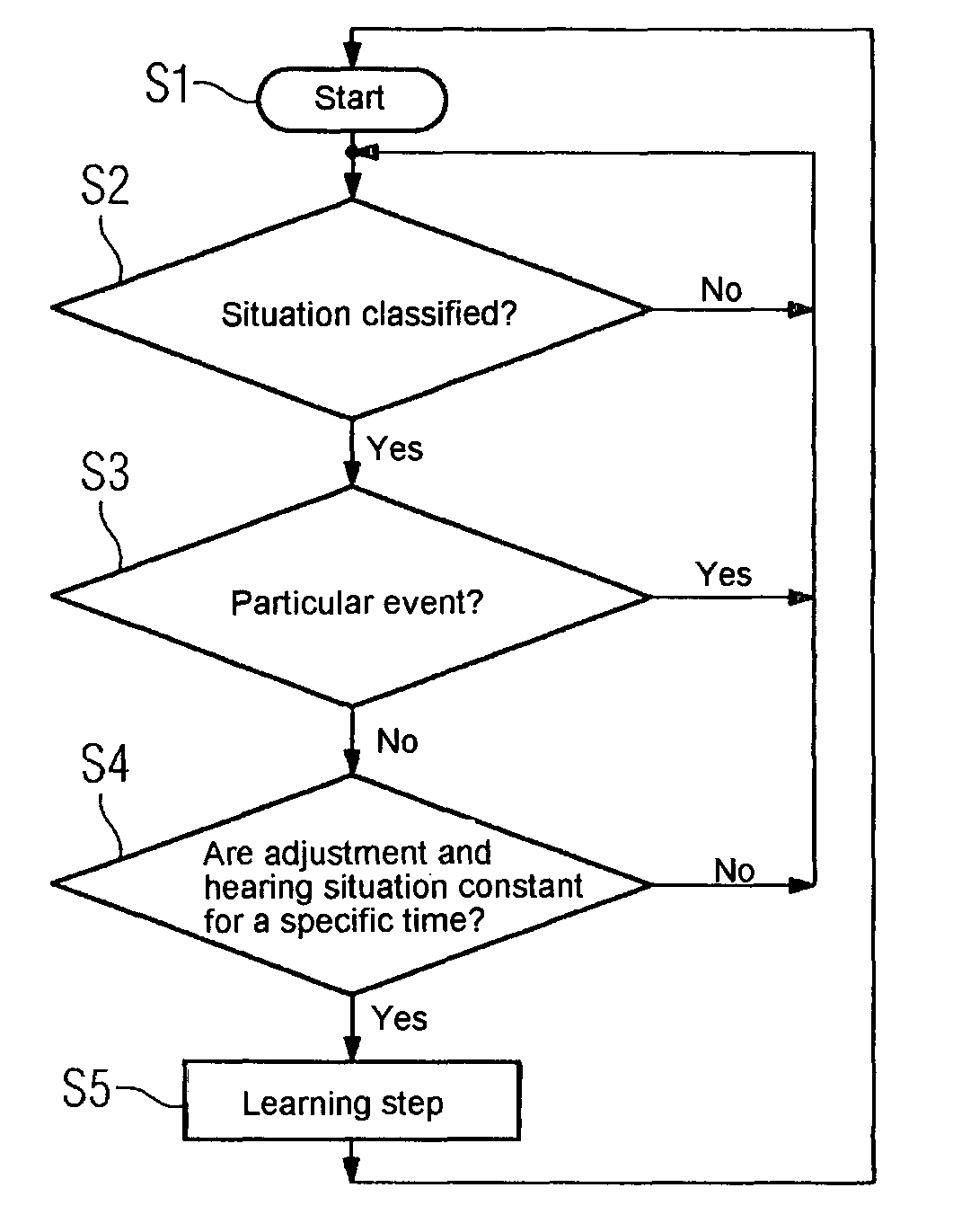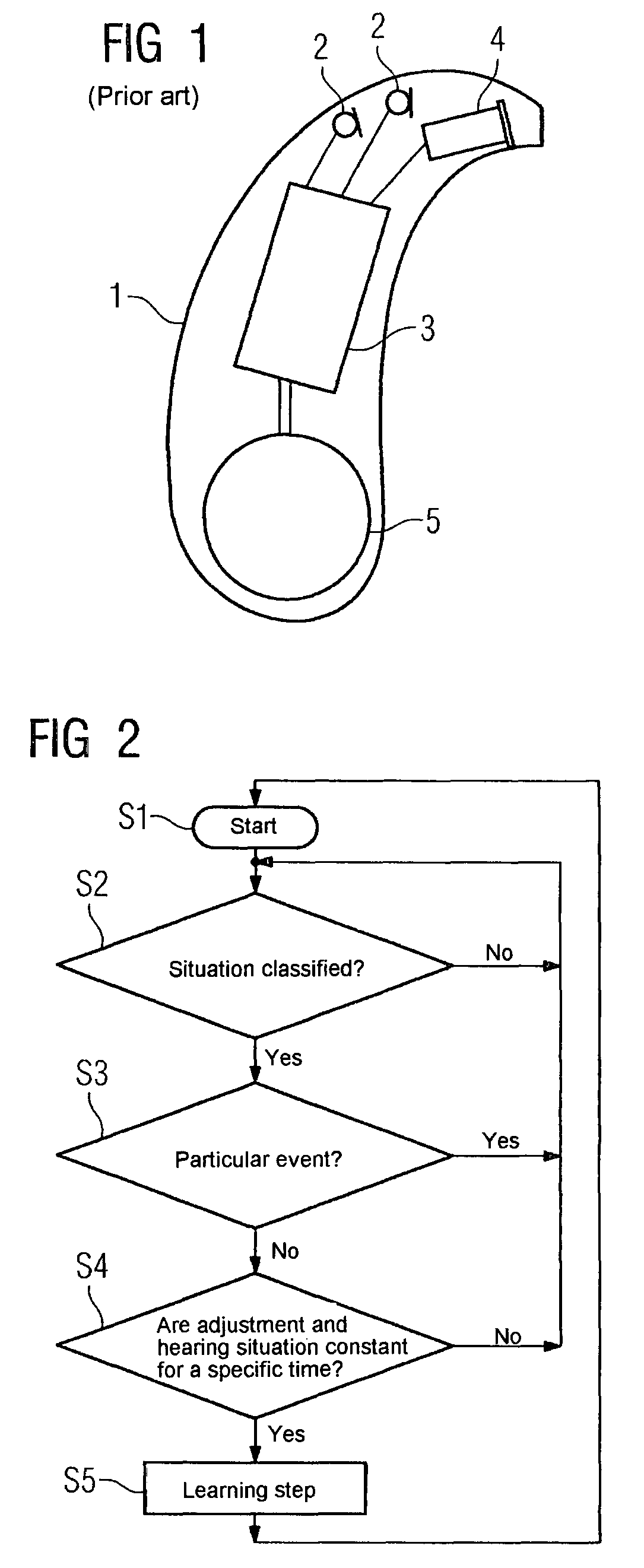Method for the time-controlled adjustment of a hearing apparatus and corresponding hearing apparatus
a technology of time-controlled adjustment and hearing apparatus, which is applied in the direction of deaf aid adaptation, electrical apparatus, electrotherapy, etc., can solve the problems of affecting the normal operation of the hearing aid, the possibility of a very laborious and easy to forget button activation of this type, and the uncertainty of when and when another change is to be expected
- Summary
- Abstract
- Description
- Claims
- Application Information
AI Technical Summary
Benefits of technology
Problems solved by technology
Method used
Image
Examples
Embodiment Construction
[0017]The exemplary embodiment illustrated in more detail below represents a preferred embodiment of the present invention.
[0018]A method for adjusting a hearing apparatus is carried out by way of example according to the flow diagram in FIG. 2. The adjustment is carried out by means of automatic learning. This learning is started in step S1. Start triggers can consist of a manual adjustment of the hearing apparatus and / or the hearing device. A modified hearing situation can likewise be used as a start trigger. Step S2 then firstly monitors whether the current hearing situation could be clearly classified. If this is not the case, classification step S2 is repeated accordingly often. In the case of a clear classification, it is possible to additionally monitor according to step S3 whether particular acoustic events have occurred. If the answer is “yes”, the classification of the hearing situation is possibly not significant and the method returns to classification step S2.
[0019]If, ...
PUM
 Login to View More
Login to View More Abstract
Description
Claims
Application Information
 Login to View More
Login to View More - R&D
- Intellectual Property
- Life Sciences
- Materials
- Tech Scout
- Unparalleled Data Quality
- Higher Quality Content
- 60% Fewer Hallucinations
Browse by: Latest US Patents, China's latest patents, Technical Efficacy Thesaurus, Application Domain, Technology Topic, Popular Technical Reports.
© 2025 PatSnap. All rights reserved.Legal|Privacy policy|Modern Slavery Act Transparency Statement|Sitemap|About US| Contact US: help@patsnap.com


